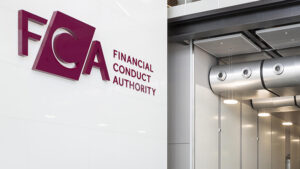Its GDP growth figures is one that is both a strength and a concern.
Economic growth of 8.9% in the fourth quarter last year is most definitely a positive, adding to its full-year growth of 9.2% for the entire year according to figures from its National Bureau of Statistics. Despite weaker demand from the US and Europe, its factory output still grew 13.9% from 2010’s level.
Pros and cons
However, if there is a quibble with these numbers, it is that they come from China’s own National Bureau of Statistics and were published less than two weeks after the end of the year, a phenomenally quick turnaround.
Also, China’s growth is no longer on its onward and upward trend and there are those looking for signs of a longer-term downward trend rather than this being simply a short-term correction.
China’s growth may well be slowing – year-on-year GDP has slowed for four consecutive quarters – but it still remains relatively strong as long as US and Europe remain weak which they are bound to do so for the next few quarters at least.
The same forces will influence 2012 as they did 2011, and China’s strengths will remain the same as long as its government continues to make positive monetary and fiscal decisions to balance growth with controlled inflation.
Andreas Roemer, head of emerging markets at DWS Investments expects its government to prioritise the big-ticket, internally-focussed policies of focusing on public housing, existing infrastructure projects, its small to medium enterprises, services and consumption.
His bullish conclusion is: “China has been underperforming steadily since the end of 2009, mostly due to overheating and tightening fears. These fears are gradually fading, therefore investors should take a positive view.”
Noting new to see here…
The bears will point to potential bubbles in China’s property markets – don’t forget, as Rowan Dartington’s head of collectives Tim Cockerill said in December’s issue of Portfolio Adviser: “All good financial crises start with a property collapse”.
There is also the reliance of other Asian, US and European countries for China’s strength to bail them out of their own economic crises, highlighted by the obscene speed with which French President Nikolas Sarkosy rushed to contact China’s President Hu Jintao just hours after a European summit to try and resolve its sovereign debt crisis concluded at the end of October last year.
China will point to a growing middle class in terms of numbers (230 million currently) and affluence (per capita income is still just $4,300) which will take up some of the slack from falling demand from the US and Europe though internal consumption still has a long way to catch up with the £241bn exported to the eurozone alone.
Its sheer scale will probably keep China on track for the next few years and it is more than likely to overtake the US as the world’s largest economy within the next decade (will it still be defined as ‘developing’ then?).
For many investors the themes, strategies and problems for 2012 will be similar to those in 2011 – albeit with a new leadership later in the year – with economic growth strong but muted compared to previous years; the threat of bubbles bursting; demand for its exports weakening; reliance on it as a cash provider increasing; its currency battle with the US ongoing.
Those desperate to read something dramatic into the Dragon taking over from the Rabbit will be sorely disappointed – we are simply in for more of the same.








